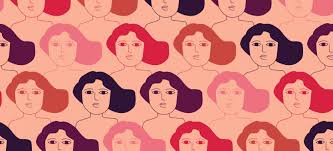The earliest living organism was called gametes. This was unisex. Any two gametes mated and created offsprings. The stronger and larger gametes were slow. They sat back and waited till the weaker and smaller joined them to produce offsprings. This difference led to the stronger gametes evolving as females and the weaker ones evolving as males. In this way the gametes gradually differentiated into female and male.
Over millions of years these differences evolved into different emotional make-up of the female and male. Thus, Vinoba said, “Women have greater concentration than men… Their condition is more suitable for dhyana-yoga and bhakti-yoga. Men’s condition is more suitable for karma-yoga and jnana-yoga.” This difference is explained by yoga psychology in terms of chakras. There are seven psychic centers or chakras in the spinal cord of human beings. The chakra located in the throat is the center of communication; and the chakra located near the heart is the center of emotions. These chakras are stronger in women. Thus, they are spontaneously able to understand what the child wants and are more emotional.
The charka located behind the eyebrows is the center of logical thinking; and the chakra located behind the navel is the center of self-determination. These chakras are stronger in men. Thus, men are more aggressive and usually do better in mathematics. The difference between female and male gametes is only of size, the difference in plants is only in the ovary or pollen in the flowers, the difference in human beings is physical as well as psychic. We may assume that the differences between women and men will only increase in the 21st century if the past trajectory is any indicator. In determining the pathway of women’s empowerment in the 21st century, the first factor we have to deal with is the increasing differences between the female and male.
The second factor is that new technologies have dramatically reduced the energy required in homemaking. Electric lights, piped water, gas stoves, washing machines and vacuum cleaners have made it possible to make the home with maybe two hours of work a day. It is no longer necessary for the one member of the household to wholly devote her or his time to homemaking.
The future course of women’s empowerment has to navigate between the above two touchstones – the increasing psychic difference between woman and man and the reduced time required for homemaking. One suggestion is that woman and man should share the works of homemaking such as cooking and washing clothes. This approach fails on the touchstone of increasing differences between women and men in the evolutionary trajectory. The increasing differences mean that there will be greater separation and specialisation of works between women and men.
Second suggestion is that women should be encouraged to “work” and become financially independent at par with men. Numbers of studies establish that working women having an independent source of income have more say in the decisions taken in the family and they are psychologically healthier. These are welcome results of this approach. However, studies also show that working women bear a “double burden” of homemaking and earning. A study of the family in Canada found that working women slept 25 minutes less ((John Fredrick Conway, The Canadian Family in Crisis). This approach, therefore, fails on the touchstone of reduced time required for homemaking. The working woman is required to carry the double burden of homemaking and earning.
A solution would be to create respect for homemaking and opportunity for women to work part time. That would pass both the touchstones. Respect for home-making would enable women to devote more time to take emotional care of the children. Mothers today have to help children with their school projects and homework. These activities require emotional energy. At the same time, part-time work would economically empower the women and provide the basic economic freedom necessary for their empowerment.
Bharat Jhunjhunwala
